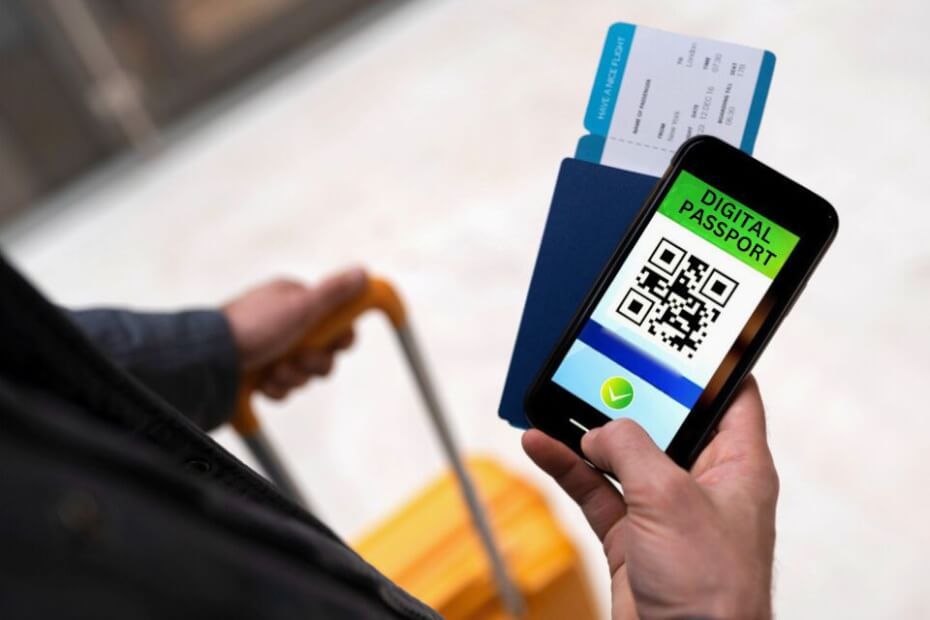
The European Commission has submitted a proposal that could change how people travel to and from the Schengen Area.
This initiative, submitted in October 2024, aims to digitize passports and identity cards and store and submit them electronically.
This initiative is designed to make border crossings faster and more secure for both European Union (EU) and non-EU citizens.
EU’s digital travel credentials and app
The proposal’s core goal is to create an electronic version of digital passports, IDs, and other travel documents, known as digital travel credentials (DTCs).
These credentials will contain the same information as the chips currently embedded in passports and ID cards.
This includes travelers’ personal and passport information and facial images, but not fingerprint scans.
The main difference? Digital travel credentials are stored on mobile apps, simplifying the process for travelers to submit documents in advance.
European Commission Vice-President Margaritis Schinas told EU Business that in-person checks are now unsustainable due to the high volume of travelers.
“By allowing travelers to digitally submit their documents in advance, border guards will be able to verify identities prior to arrival, streamlining the process for all travelers,” she added.
The EU’s digital travel app will also let travelers create and store their digital passports, IDs, and other travel credentials and submit travel plans.
It will also allow travelers to send their digital travel credentials electronically for faster border pre-clearance.
Using the EU digital travel app will be free of charge and will only be voluntary.
This means travelers can choose whether to use the new digital travel credentials and app or stick with traditional documents.
How digital travel credentials help

The EU’s proposed digital travel system is primarily expected to reduce wait times at borders.
Currently, everyone entering the Schengen Area must go through physical checks, which can lead to long delays.
Allowing travelers to submit digital credentials in advance helps border officers verify documents faster, streamlining the process for everyone.
For border authorities, this proposed digital travel system also heightens security by reducing identity fraud.
The European Commission stated that digital passports, IDs, and other travel credentials will be much harder to forge than paper documents.
It will make it easier for authorities to focus on more significant security threats, such as human trafficking or cross-border crime.
EU Member States can allow their citizens to use the digital travel system for other forms of registration and identification.
Digital passports and the EU’s new border systems
The digital passport initiative is part of a broader modernization of the EU’s border systems.
It will work with two upcoming automated EU border systems: the Entry/Exit System (EES) and the European Travel Information and Authorization System (ETIAS).
The EES uses fingerprint and facial scans to record non-EU citizens’ and residents’ entries and exits.
It will replace manual stamping of passports, helping detect overstays and monitor non-EU travelers crossing EU borders.
On the other hand, the ETIAS is a required pre-travel authorization for non-visa nationals, similar to the United Kingdom’s (UK’s) Electronic Travel Authorization (ETA) Scheme.
Travelers must apply for an ETIAS before their trip. This allows the EU to vet and pre-screen non-visa travelers to identify potential security or health threats before they arrive.
The new border check system, which will launch in 2025, will speed up the process, strengthen border security, and reduce illegal immigration.
They will work closely with the proposed digital travel system, which will allow travelers to have their ETIAS and EES applications in one place.
This integration will make the border process even more streamlined and efficient.
Digital passports’ security and privacy concerns

While the benefits of digital travel credentials are clear, many have raised concerns about privacy and data security.
These digital passports contain sensitive personal information, so the system must be protected against hacking and misuse.
The app will require travelers to give explicit consent before their data is processed.
Travelers will retain control over how their information is used and shared.
“Data protection and security are at the heart of this new proposal,” the Commission said in its official statement.
It also stated that all personal data will be encrypted, and only authorized personnel can access it.
Border officers who access this information must be specially trained in data protection.
This ensures that personal information is handled securely and responsibly.
Moreover, the app will not store fingerprints, which are considered more sensitive than facial images.
This limits the amount of travelers’ personal data that could potentially be at risk.
By focusing on encryption and strict access protocols, the EU hopes to minimize any potential security breaches.
Timeline and next steps
Both the European Parliament and the EU Council must first approve the Commission’s proposal.
Once they approve it, the digital travel system will begin development, with the goal of having it fully operational by 2030.
This will allow integration with the EU Digital Identity Wallet, providing a secure way for Europeans to verify their identity for digital services.
The Commission also encourages EU Member States to adopt digital identity cards for domestic use.
This can be especially useful for opening bank accounts or accessing government services.
The broader use of digital identities could further reduce administrative burdens for both citizens and governments.
If all goes well, travelers could use digital passports by the end of the decade, ushering in a new era of efficient and secure travel in Europe.
Commissioner Johansson said, “We are building a future where travel is simpler, faster, and safer for everyone.”t and secure travel in Europe.
Commissioner Johansson said, “We are building a future where travel is simpler, faster, and safer for everyone.”

